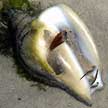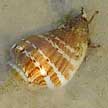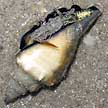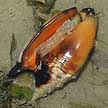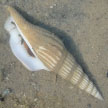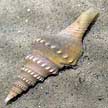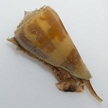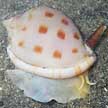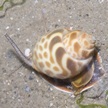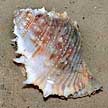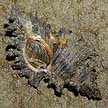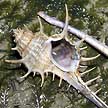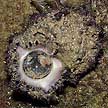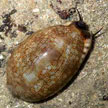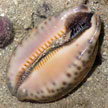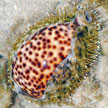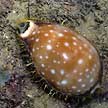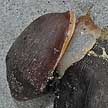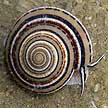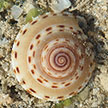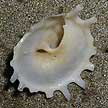Photo
index of snails on Singapore shores
large snails
(5-8cm) various shell shapes |
|
|
|
|
|
| 6-7cm.
Shell thick with large flared lip, inner shell opening pearly, gold.
Silty sandy areas near seagrass. Commonly seen on many of our shores. |
6-7cm.
Shell thick with wavy flared lip, pattern of bars on upper side. Sandy
areas and near seagrass. Sometimes seen on some of our shores. |
3-5cm.
Shell longer and narrower, inner shell opening black. Seagrass areas.
Sometimes seen on some of our shores. |
7-9cm.
Shell thick, flared lip with one prong. Shell opening with brown stains.
Rare. Rarely seen. |
|
|
|
|
|
|
| 6-7cm.
Shell long narrow thick with flared wavy lip. Rarely seen. |
5-7cm.
Shell thick, conical with long siphonal canal and regular knobs on
the spiralling ridges. Sandy areas near seagrasses. Sometimes seen
on our Northern shores. |
5-10cm.
Shell heavy, conical like an ice-cream cone. But some have pointed
tips or are olive-shaped. Shell opening a narrow slit. Reefs, rocky
shores. Live ones rarely seen. HIGHLY
DANGEROUS. Do
not handle. |
5-7cm.
Shell thin with spiral ribs. White, cream, pink or blue-grey. Sometimes
unmarked, sometimes with 4 or 5 spiral bands of brown spots. Sometimes
seen on some of our shores. |
4-5cm.
Shell thick, conical, smooth with distinctive spiral. Shell colour
and pattern variable. Sandy areas near seagrasses. Sometimes seen
on our Northern shores. |
|
|
|
|
|
| 4-6cm.
Shell thick, conical with many regular bumps and blunt spines. Rarely
seen. |
5-7cm. Shell
thick with rows of fronds or spikes along the length. Hard surfaces
and sandy areas near reefs. Commonly seen on our Southern shores. |
6-7cm.
Shell with spines and elongated siphonal canal. Usually only shells
of dead snails are seen on our Northern shores. |
|
4-6cm.
Shell, thick and flattened conical usually hidden by encrusting
lifeforms. Shell opening pearly. Operculum thin, brown and horn-like.
Rocks near reefs. Sometimes seen on some of our Southern shores. |
|
|
|
|
|
| 5-8cm.
Shell smooth with variable pattern. Underside with spots on the outer
edges and brown 'teeth'. Near reefs. Sometimes seen on our Southern
shores. |
8-9cm,
can reach 15cm. Shell smooth oval to pear-shaped, with lots of dark
spots. Underside white including the 'teeth'. The mantle pattern resembles
tiger stripes. Near living reefs. Rarely seen, on our Southern shores. |
7cm.
Near reefs. Rarely seen. |
|
4-9cm.
Shell thick oval. Inner shell opening white. On mangrove trees. Sometimes
seen in our mangroves. |
|
|
|
|
|
| 5-6cm
in diameter. Shell coils form a flat disk. Spirals in white, black
and shades of brown. The body is striped too. Sandy shores. Sometimes
seen on our Southern shores. |
6-8cm
in diameter. Shell coils form a flat disk. Spirals of brown bars.
The body is plain. Seagrass meadows. Rarely seen. |
8-10cm.Shell
not so thick, whorled with 14 long spines on the last whorl. Empty
shells sometimes washed ashore. |
|
|
|
photo
index of
molluscs on this site
|
|

